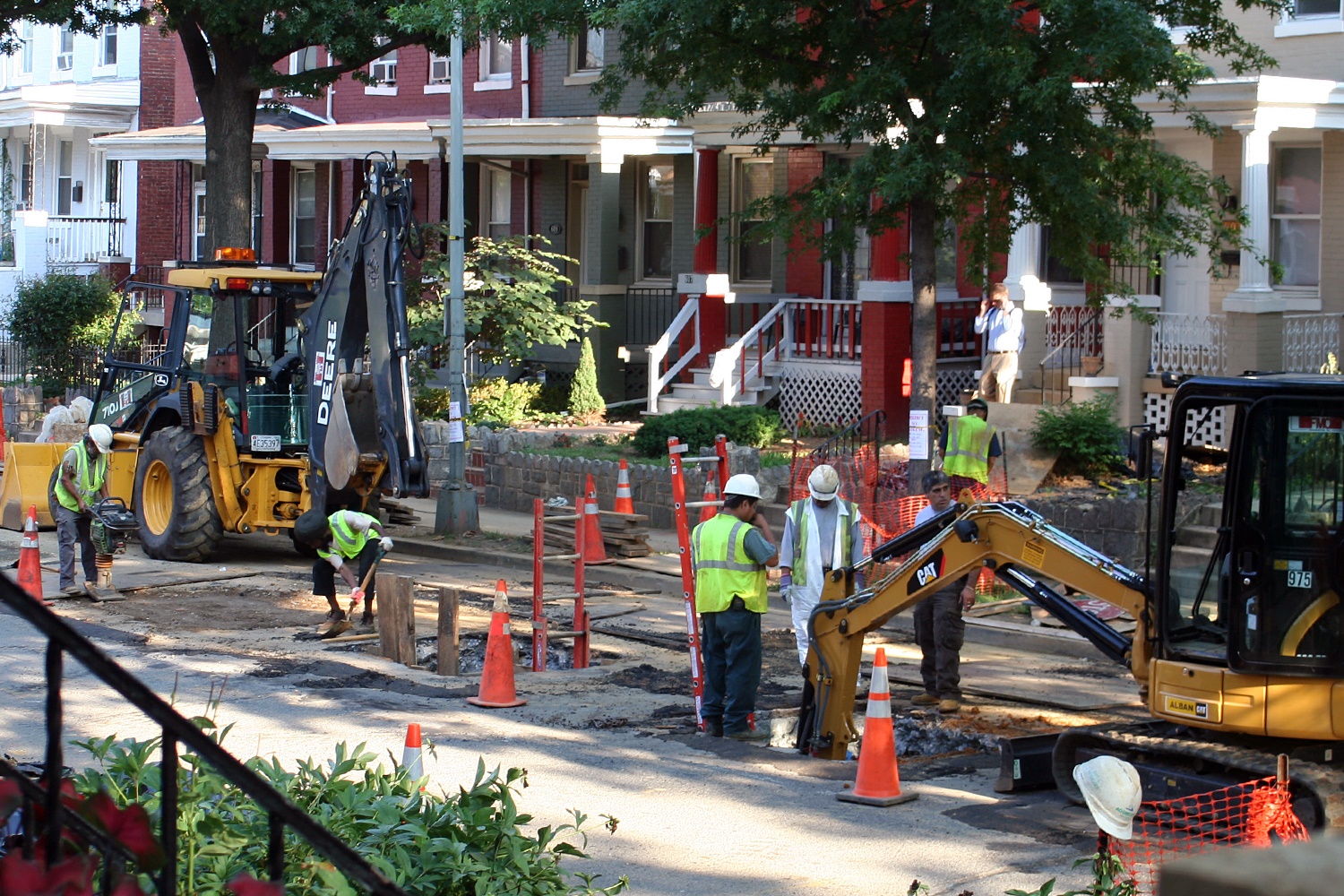Canada Post's Future: Commission Recommends Eliminating Daily Home Mail Delivery

Table of Contents
The Commission's Recommendations and Rationale
The commission's report, following extensive research and analysis, concluded that maintaining daily home mail delivery is no longer financially sustainable. Their reasoning centers on several key factors:
-
Declining Mail Volume: The dramatic rise of digital communication has led to a significant decrease in the volume of traditional mail sent daily. This reduced mail volume directly impacts Canada Post's operational efficiency and profitability. Email, instant messaging, and online bill pay have all contributed to this downward trend in physical mail usage.
-
Rising Operational Costs: The cost of maintaining the existing infrastructure and workforce needed for daily home delivery is unsustainable. Fuel costs, vehicle maintenance, and employee salaries contribute to a constantly increasing operational burden on Canada Post. This increase outpaces revenue generated from mail delivery, creating a financial deficit.
-
Need for Modernization and Increased Efficiency: The commission emphasizes the need for Canada Post to modernize its operations and improve efficiency. This includes streamlining processes, investing in new technologies, and adopting more cost-effective delivery strategies. Failure to adapt will lead to further financial difficulties.
-
Exploration of Alternative Delivery Models: The report proposes exploring a range of alternative delivery models, including less frequent home delivery, a wider expansion of community mailboxes, and a greater focus on parcel delivery services which show increasing growth. This shift requires adapting the existing infrastructure and workforce.
-
Focus on Maintaining Essential Mail Services: While the commission proposes changes to residential mail delivery, it emphasizes the importance of maintaining essential services, such as the delivery of parcels, financial mail (bank statements, cheques), and other time-sensitive correspondence. These services will remain a priority for Canada Post.
Potential Impacts of Eliminating Daily Home Mail Delivery
The potential elimination of daily home mail delivery carries significant implications, both positive and negative. These impacts can be categorized into economic and social consequences.
Economic Impacts
-
Job Losses: A shift away from daily home delivery could result in job losses within Canada Post and related industries, such as trucking and mail sorting companies. The extent of job losses will depend on the specific alternative delivery model adopted.
-
Potential Cost Savings: The commission argues that eliminating daily home mail delivery will lead to significant cost savings for Canada Post. Reduced fuel consumption, lower vehicle maintenance costs, and optimized workforce allocation are all potential sources of savings.
-
Impact on Businesses: Businesses that rely on daily mail delivery, such as banks, insurance companies, and those involved in direct mail marketing, could face disruptions and increased costs if alternative delivery methods are slower or less reliable.
Social Impacts
-
Accessibility Concerns: The proposed changes raise concerns about accessibility, particularly for elderly individuals, people with disabilities, and residents in rural areas with limited access to alternative mail collection points.
-
Changes to Community Interaction: Daily mail delivery provides a sense of community and social connection for many. Less frequent delivery could diminish these informal interactions.
-
Environmental Implications: While reducing daily trips might seem environmentally friendly, the increased reliance on personal vehicle trips to collect mail from community mailboxes could offset environmental benefits, particularly in areas with limited public transportation.
Alternative Delivery Models and Future of Canada Post Mail Delivery
The commission's report suggests several alternative delivery models to ensure the long-term viability of Canada Post mail delivery:
-
Expansion of Community Mailbox Programs: Increasing the number of community mailboxes is a key element of the proposed changes. This involves installing more centrally located mailboxes for residents to collect their mail.
-
Increased Reliance on Parcel Delivery Services: Given the growth in e-commerce, Canada Post can leverage its existing parcel delivery infrastructure to offset losses in traditional mail delivery.
-
Strategic Partnerships with Private Courier Companies: Collaborating with private courier companies could provide additional capacity and reach for parcel delivery services.
-
Investment in New Technologies: Investing in automated sorting systems and other technological advancements can improve efficiency and reduce operational costs.
-
Focus on E-commerce and Specialized Mail Services: Canada Post can focus on developing specialized mail services tailored to the needs of businesses and individuals engaged in e-commerce.
Public Opinion and Political Response to the Proposed Changes
The proposed changes to Canada Post mail delivery have generated significant public debate and diverse reactions.
-
Public Surveys and Polls: Public opinion polls show a mix of support and opposition to the proposed changes, with concerns about accessibility and job losses outweighing the potential for cost savings.
-
Political Debate and Potential Policy Adjustments: The government's response to the commission's report has been met with political debate, with discussions on potential policy adjustments to mitigate the negative social and economic impacts.
-
Advocacy Groups: Various advocacy groups representing affected communities, seniors, and labour unions have voiced strong opposition to the proposed changes.
-
Potential for Legal Challenges and Public Consultations: There is a potential for legal challenges and public consultations, ensuring that all voices are heard before any final decisions are implemented.
Conclusion
The commission's recommendation to eliminate daily home mail delivery for Canada Post marks a pivotal moment for the future of postal services in Canada. While modernization and cost-saving measures are necessary for Canada Post's long-term survival, careful consideration must be given to the potential social and economic impacts on various communities. The success of any transition will depend on the successful implementation of alternative delivery models that address accessibility concerns and mitigate job losses. The future of Canada Post mail delivery hinges on a balance between financial sustainability and ensuring equitable access to essential mail services.
Call to Action: Stay informed about the ongoing debate surrounding Canada Post mail delivery changes and participate in public consultations to ensure your voice is heard. Engage with your local representatives and learn more about how the proposed changes to Canada Post mail delivery may affect you and your community. Your input is crucial to shaping the future of this vital service.

Featured Posts
-
 Flexibilna Praca Home Office A Jeho Vplyv Na Produktivitu A Komunikaciu
May 20, 2025
Flexibilna Praca Home Office A Jeho Vplyv Na Produktivitu A Komunikaciu
May 20, 2025 -
 Three Decades Of Service Reflecting On Alito And Roberts Supreme Court Careers
May 20, 2025
Three Decades Of Service Reflecting On Alito And Roberts Supreme Court Careers
May 20, 2025 -
 Saisonende Bundesliga Abstieg Fuer Bochum Und Kiel Leipzig Entgeht Champions League
May 20, 2025
Saisonende Bundesliga Abstieg Fuer Bochum Und Kiel Leipzig Entgeht Champions League
May 20, 2025 -
 Le Maintien En Pro D2 Decryptage De La Situation De Valence Romans Et Su Agen
May 20, 2025
Le Maintien En Pro D2 Decryptage De La Situation De Valence Romans Et Su Agen
May 20, 2025 -
 Urgent Hmrc Child Benefit Update Important Messages To Act On
May 20, 2025
Urgent Hmrc Child Benefit Update Important Messages To Act On
May 20, 2025
